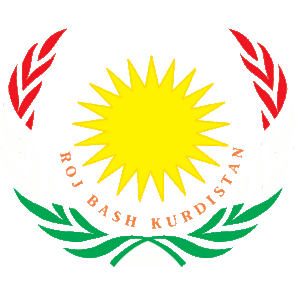Hussein Tahiri, Kurdish Media Analyst
The Kurds are going to celebrate Newruz [1] on 21 March 2000. They regard Newruz as their national day of celebration, a day which is the beginning of a new year. When and how Newruz began is not clear for the Kurds. They have not done any research on Newruz and its origin. There is much ambiguity about the origin of Newruz. The claim by the Kurds that Newruz is the celebration of the victory of Kawa, the Smith, over Azhdahak or Zahak seems contradictory and ambiguous.
This brief article does not intend to analyse the origin of Newruz or give a historical account of its origin. It merely aims to attract more discussion on this topic. If this article is criticised, or if it provides the ground for research on the origin of Newruz it has served its purpose.
The Kurds celebrate Newruz but they do not know about its origin; and many mistakenly relate the origin of Newruz to Kawa the Smith. If you ask Kurds what is Newruz; they will immediately reply, "it is the celebration of the victory of Kawa over the cruelty of Zahak". According to the Iranian myth two snakes grew on the shoulders of King Zahak. Each day these snakes were to be fed with the brains of two young human beings. People could not tolerate seeing their children killed to feed the snakes. So, they revolted against the tyranny of Zahak; Kawa the Smith led the revolt.[2]
Many Kurds see Kawa as the symbol of freedom. They have politicised Newruz, and trace the Kurdish revolts as uprisings against Zahaks of this era. The Kurdish movements want to lead the Kurds against the cruelty of the ruling governments as Kawa did against the cruelty of Zahak. Of course, nationalist movements usually try to revive the old symbols of their culture; and sometimes they create new one.
However, one should ask who was Zahak? Was he an Arab? An Iranian calender of 1991 published by a group called 'the Guardians of the Iranian Culture', outlines the seventh of October as the anniversary of the victory of Kawa over the Arab Zahak. In view of this group Zahak was an Arab. History does not indicate, as far as my knowledge extends, that before Islam the Arabs ruled Iran, and so Kawa rose against their rule to free Iranian people.
Zahak could be no one, but the last king of the Medes. Was he a cruel as the Iranian legend claims? This cruelty was attributed to him to serve a purpose; and that was to reduce the impact of Kurdish religion(s) on Zoroastrianism.[3] Zahak was the last king of the Medes who was defeated by his half-Persian grandson, Syrus the Great, who founded the Persian empire of the Achaemanid. Then, he was given a demonic character. Izady states that during the reign of Zahak the influence of the native religion of the cults of Angles on the newly developing Zoroastrianism was great. This influence introduced the priestly office of Mugi into Zoroastrianism. It was probably a reaction to this influence that Zoroastrians gave a demonic character to Zahak. This demonic character attributed to Zahak consequently entered into that religion (Zoroastrianism), Iranian mythology and literature.[4]
It is curious to note that the Kurds regard themselves and are regarded by many historians as the descendants of the Medes. Therefore, regarding Newruz as the celebration of the victory of Kawa over the tyranny of Zahak, and believing in having Median ancestors would be contradictory. If we accept that Newruz is the celebration of victory of Kawa over Zahak, we should realise that the Kurds are celebrating a Newruz which goes against them. So, trying to politicise something without knowing its origin or without carefully analysing it would be fatal for a nation. However, this seems to be a myth rather than a reality. The origin of Newruz should be sought somewhere else.
It is believed that Newruz is an ancient celebration of the Aryan races. In the ancient times the Aryans had two seasons: winter and summer. Winter was ten months and summer was two months. Later on this seasons were changed; winter became five months and summer seven months. [5] It is possible that the change in seasons was the result of the migration of the Mede and Persian tribes to Iran. When they still were living in Europe [6] and had not migrated, winter was ten months and summer was two months, but when they migrated to Iran these seasons changed to five months winter and seven months summer. At that time, there were two new years' celebrations: one was the celebration of the beginning of summer when animals were taken for grazing, and the other was the celebration of the beginning of winter when animals were returned to stables. [7] Probably, the celebration of the beginning of summer was Newruz and of the beginning of the winter was Mehregan which is still being celebrated by the Persians at the start of winter.
Now, it should be asked if Newruz is the celebration of the victory of Kawa over Zahak, is it a Kurdish or a Persian celebration? If Newruz is the celebration of the coming of warm season, is it a Kurdish, Persian, or belongs to both of them. After the fall of the Medes the Kurds have been under the influence of the Persians. The Kurds could have got this celebration from the Persians. The Kurds have done no research on the origin of Newruz. The available research is from the Persians, and they regard Newruz as an Iranian national celebration. The term Iranian has much wider application but as the Persian culture has been dominant the term Iranians has become synonym with Persians. Therefore, the question arises is "Do the Kurds practice a blind culture, or do they want to create a blind culture?"
Welcome To Roj Bash Kurdistan


Is Newroz Kurdish?
6 posts
• Page 1 of 1
Is Newroz Kurdish?
The suppression of ethnic cultures and minority religious groups in attempting to forge a modern nation were not unique to Turkey but occurred in very similar ways in its European neighbours - Bruinessen.
-

Vladimir - Shaswar

- Posts: 2036
- Joined: Sun Apr 17, 2005 10:31 am
- Highscores: 0
- Arcade winning challenges: 0
- Has thanked: 0 time
- Been thanked: 2 times
- Nationality: Hispanic
What do you think Diri? You agree with it? I actually am not a fan of mister Izady. So this article is not completely true.
The suppression of ethnic cultures and minority religious groups in attempting to forge a modern nation were not unique to Turkey but occurred in very similar ways in its European neighbours - Bruinessen.
-

Vladimir - Shaswar

- Posts: 2036
- Joined: Sun Apr 17, 2005 10:31 am
- Highscores: 0
- Arcade winning challenges: 0
- Has thanked: 0 time
- Been thanked: 2 times
- Nationality: Hispanic
Vladimir wrote:What do you think Diri? You agree with it? I actually am not a fan of mister Izady. So this article is not completely true.
Huseîn Tahirî wrote this article... Not Îzadî?
I don't see the link... And it's been a while since I read the article - so I can't remember if there indeed was a reference to Îzadî...
BUT - I do not necesserily believe in the article... We must be critical to whatever we read...


-

Diri - Shaswar

- Posts: 6517
- Joined: Thu May 12, 2005 11:59 am
- Location: Norway
- Highscores: 0
- Arcade winning challenges: 0
- Has thanked: 2 times
- Been thanked: 10 times
- Nationality: Kurd
http://www.kurdmedia.com/reports.asp?id=133
Notes
1 Newruz is the first day of New Year among Iranic peoples. The Kurds regard it as their national day and celebrate it every year.
2 Abdul Rahman Ghassemlou, Kurdistan and the Kurds, Balinge, JN Wesanin Jina Nu, 1991, pp.41-42.
3 It should be stated that the Kurds were not Zoroastrians as one might believe. Zoroaster was born in Urmia in north-west of Iran but he could not gather followers in this region. After a decade of preach he only gained one convert. Then he had to travel to eastern Persia, and it was there where his mission was successful. (Brigadier-General Sir Percy Sykes A History of Persia, London, MacMillan and Co., Limited, 1930, Vol. I, p.104).
4 Mehrdad Izady, The Kurds: A Concise Handbook, Washington, Taylor and Francis International Publishers, 1992, p.34.
5 ’Newruz according to the researchers’ Newruz and National Legends. This is from an article in Persian which was given to me by a friend. Unfortunately, there is no any other details.
6 S.G. Talageri states that Iranians with other Indo-Aryans originally lived in South Russia. Then they passed through Central Asia and settled in Iran. (S.G. Talageri, The Aryan Invasion Theory: A Reappraisal, New Delhi, Aditya Prakashau, 1993, pp.25,139).
7 ’Newruz according to the researchers’ Ibid.
Notes
1 Newruz is the first day of New Year among Iranic peoples. The Kurds regard it as their national day and celebrate it every year.
2 Abdul Rahman Ghassemlou, Kurdistan and the Kurds, Balinge, JN Wesanin Jina Nu, 1991, pp.41-42.
3 It should be stated that the Kurds were not Zoroastrians as one might believe. Zoroaster was born in Urmia in north-west of Iran but he could not gather followers in this region. After a decade of preach he only gained one convert. Then he had to travel to eastern Persia, and it was there where his mission was successful. (Brigadier-General Sir Percy Sykes A History of Persia, London, MacMillan and Co., Limited, 1930, Vol. I, p.104).
4 Mehrdad Izady, The Kurds: A Concise Handbook, Washington, Taylor and Francis International Publishers, 1992, p.34.
5 ’Newruz according to the researchers’ Newruz and National Legends. This is from an article in Persian which was given to me by a friend. Unfortunately, there is no any other details.
6 S.G. Talageri states that Iranians with other Indo-Aryans originally lived in South Russia. Then they passed through Central Asia and settled in Iran. (S.G. Talageri, The Aryan Invasion Theory: A Reappraisal, New Delhi, Aditya Prakashau, 1993, pp.25,139).
7 ’Newruz according to the researchers’ Ibid.
The suppression of ethnic cultures and minority religious groups in attempting to forge a modern nation were not unique to Turkey but occurred in very similar ways in its European neighbours - Bruinessen.
-

Vladimir - Shaswar

- Posts: 2036
- Joined: Sun Apr 17, 2005 10:31 am
- Highscores: 0
- Arcade winning challenges: 0
- Has thanked: 0 time
- Been thanked: 2 times
- Nationality: Hispanic
6 posts
• Page 1 of 1
Who is online
Registered users: Bing [Bot], Google [Bot], Majestic-12 [Bot]

















